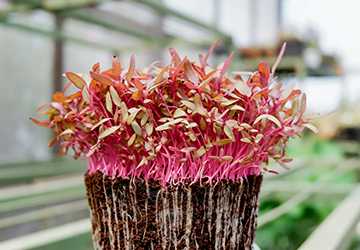In the present era of culinary innovation, where complexity often reigns supreme, a simplistic yet profound trend emerges towards ancestral diets. The resurgence of ancient grains signifies not merely a nod to the dietary staples of our forefathers but a rekindling of the diverse flavours, textures, and nutritional boons these grains introduce to contemporary tables.
This discourse ventures into the realm of these extraordinary grains, exploring their multifaceted advantages and how enticing recipes can seamlessly incorporate them into today's dietary practices.

Cooking with Ancient Grains
Cooking with ancient grains embarks us on a culinary odyssey to yesteryears, re-establishing a bond with the gastronomic traditions that have sculpted human civilization. These grains, such as quinoa, amaranth, millet, and farro, served as foundational elements in ancestral diets. They endow meals with a robust, more nuanced foundation than many contemporary grains, imparting dishes with a distinct and reminiscent flavour profile.
The Case for Ancient Grains
● Nutrient Density: Ancient grains are nutrient powerhouses compared to modern grains. Rich in dietary fibre, proteins, and vital minerals like magnesium and iron, they present a nutritious alternative to refined grains.
● Ecological Footprint: Owing to their natural resistance to pests and diseases, these grains necessitate fewer pesticides and fertilize less land, positioning them as a more sustainable environmental choice.
● Culinary Flexibility: Whether in salads, soups, breads, or desserts, cooking with ancient grains allows for a broad spectrum of culinary creativity, appealing to both traditional and avant-garde taste preferences.
Benefits of Ancient Grains
The benefits of ancient grains transcend their nutritional content, extending to environmental and health-related virtues. Their cultivation encourages biodiversity and soil vitality, fostering more sustainable farming practices. From a health perspective, these grains support digestive health, diminish inflammation, and mitigate the risk of chronic illnesses, courtesy of their elevated fibre and antioxidant profiles.
Integrating Ancient Grains into Your Diet
Adopting a diet that includes ancient grains is more straightforward than anticipated. Begin by substituting some contemporary grains with ancient variants in your recipes. For instance, swap out half the wheat flour for quinoa flour in your baking endeavours or incorporate barley into your morning smoothie for an added fibre kick.
Ancient Grain Recipes
Exploring ancient grain recipes is both a gustatory and wellness adventure. These recipes serve as a platform for these grains to shine, illustrating their versatility and capacity to boost the nutritional value of our meals.
Recipe Inspirations
● Quinoa Salad with Roasted Vegetables: This colourful, nutrient-rich salad combines the nutty essence of quinoa with the caramelized sweetness of roasted vegetables.
● Millet Porridge with Mixed Berries: A robust, comforting breakfast choice that offers an optimal commencement to the day, packed with dietary fibre and antioxidants.
● Farro Risotto with Mushrooms: This rich, flavoursome dish introduces a whole-grain twist to the traditional risotto, brimming with taste and texture.
Culinary Recommendations
When ancient grains are used, it's essential to consider their cooking durations and water requirements, as these can significantly differ from grain to grain. Pre-soaking grains like farro and millet can lessen cooking time and improve their digestibility.

Reclaiming the Essence: Mysteries Unfolded of Time-Honored Grains
Venturing further into the domain of ancient grains, we unearth aspects of these grains that affirm their lasting heritage. Each variety narrates its unique saga, a fragment from bygone eras, transcending mere nourishment; they forge a bridge to the epochs and civilizations that pioneered their cultivation.
The Rich Tapestry of Ancient Grains
● Teff: Hailing from the highlands of Ethiopia, teff emerges as a colossus in nutritional prowess, diminutive in stature yet colossal in its contribution to well-being and gastronomy. It lays the foundation for injera, the cherished Ethiopian flatbread.
● Spelt: Rooted in the annals of time, spelt imparts a rustic, nut-like essence and is a bastion of nutrients. It exemplifies the grain's adaptability and tenacity across millennia.
● Kamut®: Closely linked to ancient Egyptian dietary habits, Kamut® boasts a luxuriant, creamy taste and is laden with selenium, a critical mineral for bolstering immune function.
Nurturing Diversity and Conservation
The revival of ancient grains in modern-day farming ushers in an epoch of ecological variety. These grains are predominantly cultivated in organic and sustainable settings and are pivotal in safeguarding our globe's botanical variety. They flourish under diverse climatic conditions and landscapes, mitigating the necessity for chemical treatments and propelling towards a more balanced ecosystem.
Gastronomic Renaissance with Ancient Grains
The re-assimilation of ancient grains into contemporary dining heralds a culinary upheaval, enriching both domestic and professional gastronomy. Their malleability to modern recipes, while preserving distinct textures and palates, champions a revival in food preparation.
● Gastronomy with Ancient Grains: Transitioning from classic sourdough loaves to intricate pastries, ancient grains introduce intricate flavours and elevate nutritional value, converting standard baked goods into culinary masterpieces.
● Worldwide Fusion: Embarking on a journey into international cuisines, ancient grains find their place from Asian stir-fries incorporating sorghum to Levantine tabbouleh enriched with freekeh, illustrating their global charm.
The Nutritious Aura Surrounding Ancient Grains
The unquestionable nutritional supremacy of ancient grains stands firm. A compendium of scientific studies supports their crucial role in cardiovascular health, weight management, and glycemic control. Abundant in antioxidants, vitamins, and minerals, these grains serve to satiate and counteract contemporary health dilemmas.
Championing Sustainability and Ethical Cultivation
The growth of ancient grains aligns with the principles of sustainable agriculture. Opting for these grains endorses ethical farming endeavors that prioritize our planet's and its dwellers' vitality. This conscientious selection bolsters smallholder farmers and motivates farming methods that align with the natural world.
Conclusion
Embracing ancient grains transcends a mere culinary fad; it signifies a return to a manner of consumption that is both sustainable and profoundly gratifying. By weaving these grains into our diets via a variety of ancient grain recipes, we not only avail ourselves of their nutritional merits but also partake in a tradition that spans thousands of years. The benefits of ancient grains are vast, touching upon aspects of wellness, environmental sustainability, and culinary diversity. As we reacquaint ourselves with these grains, we bridge the historical divide, inviting heritage onto our plates in the most delectable manner possible.
















